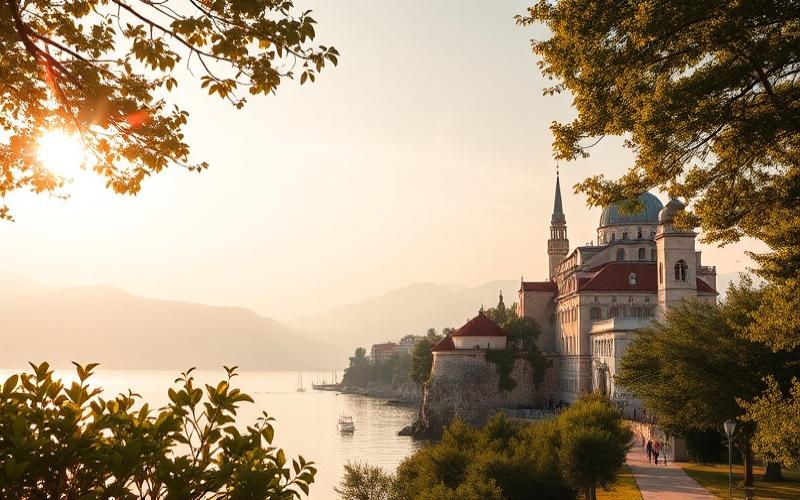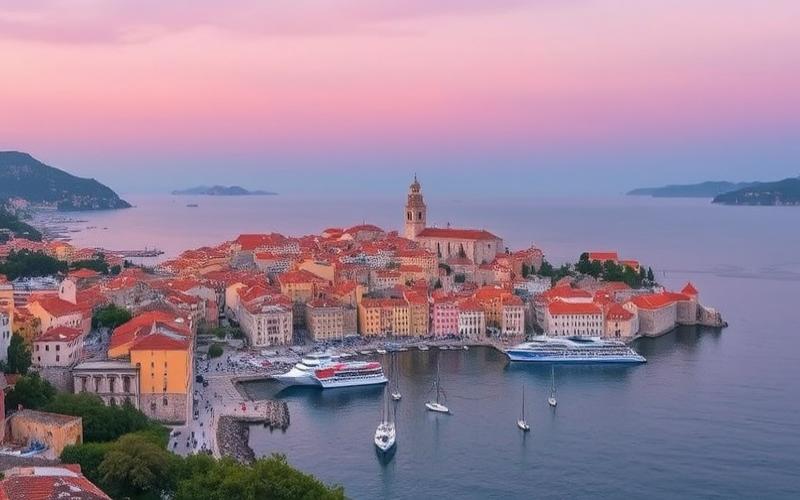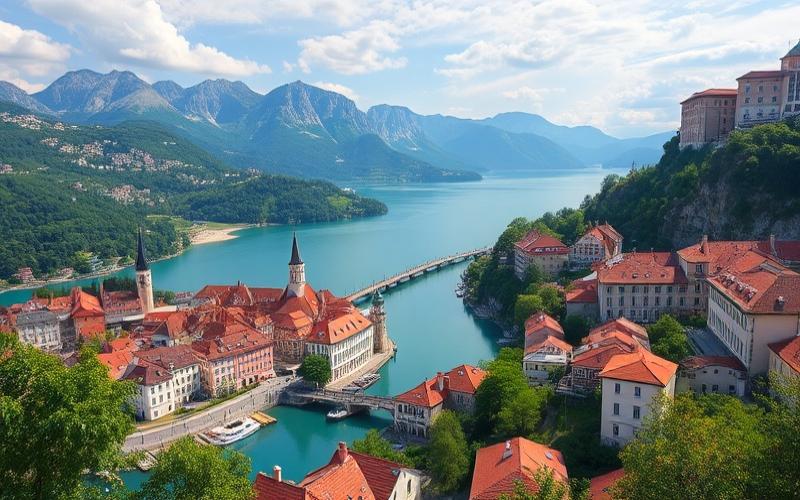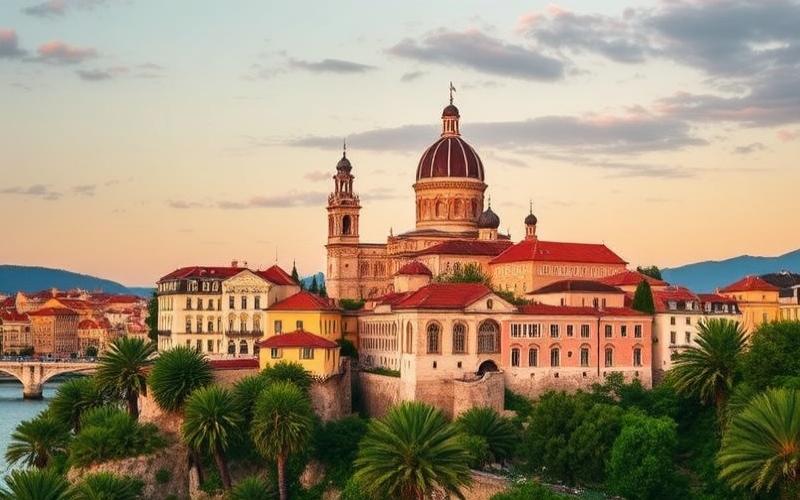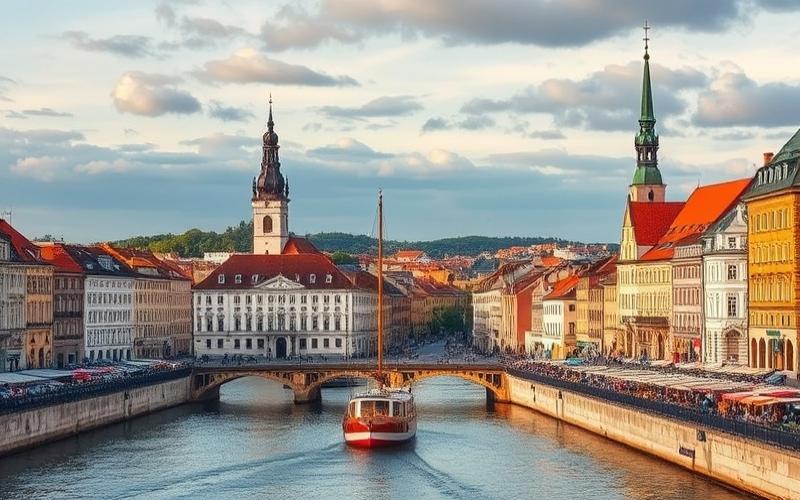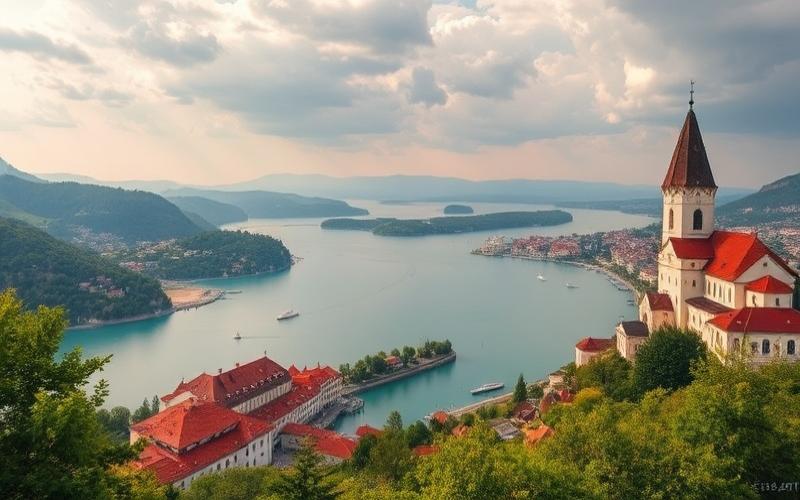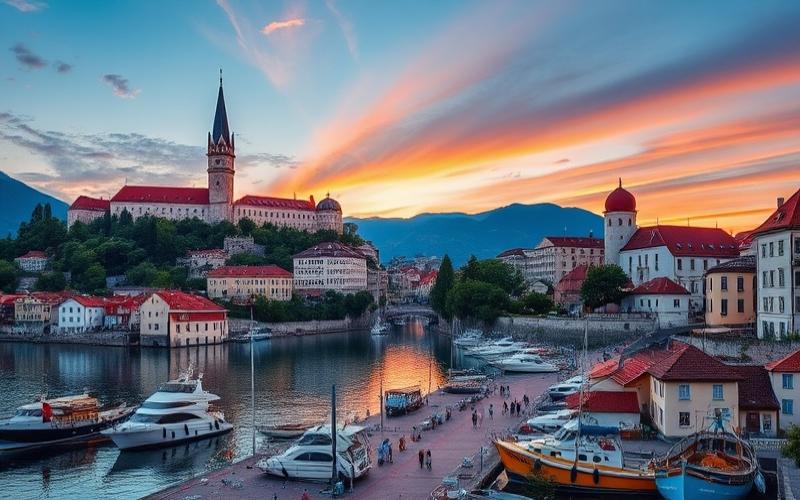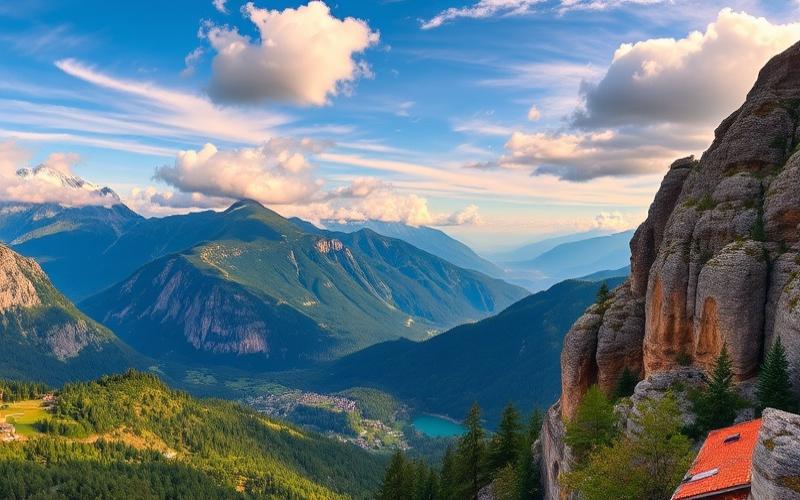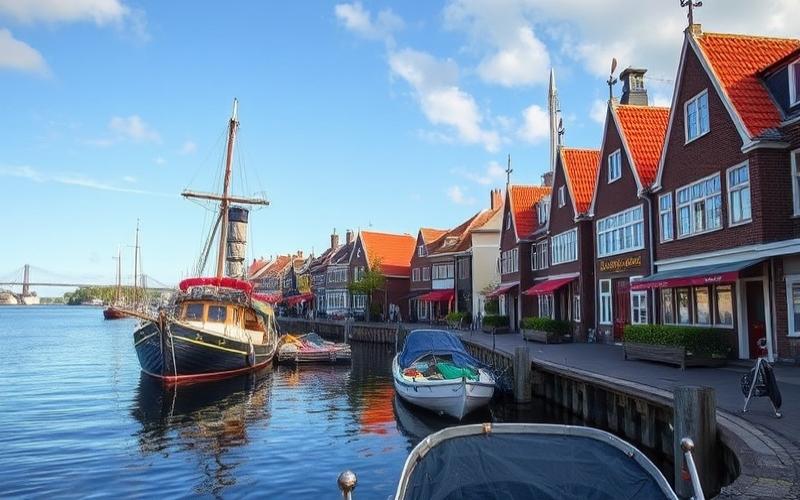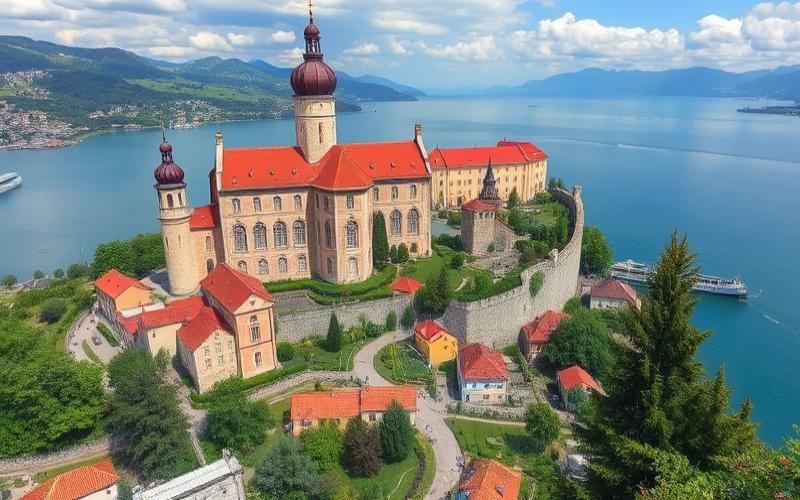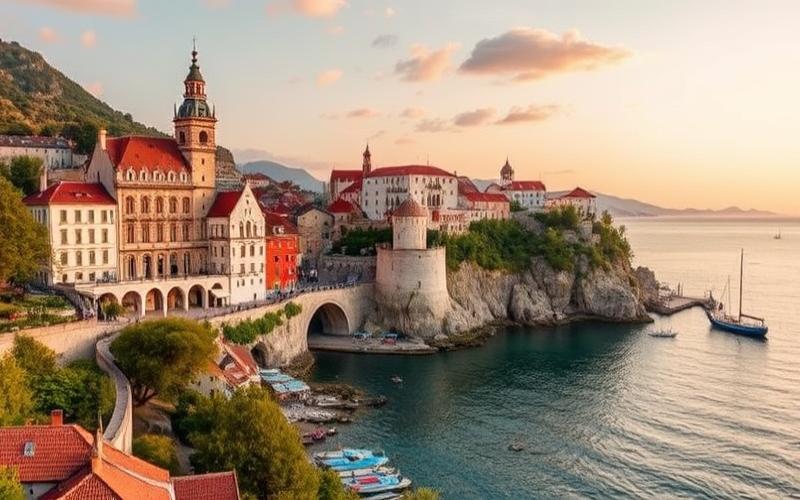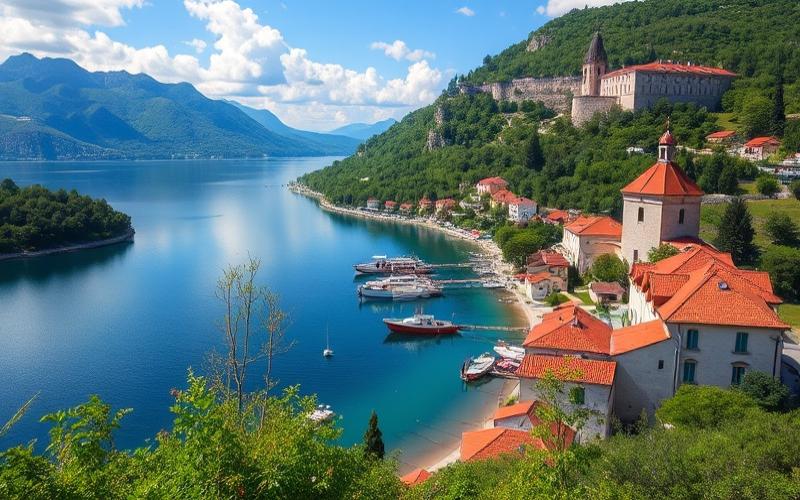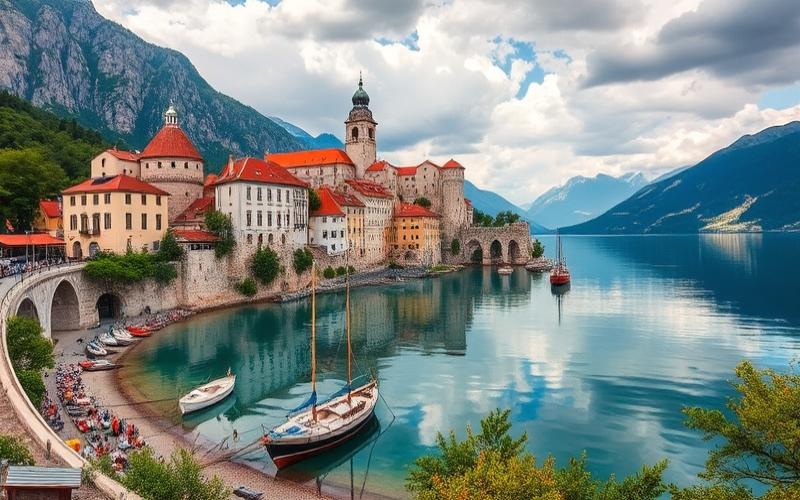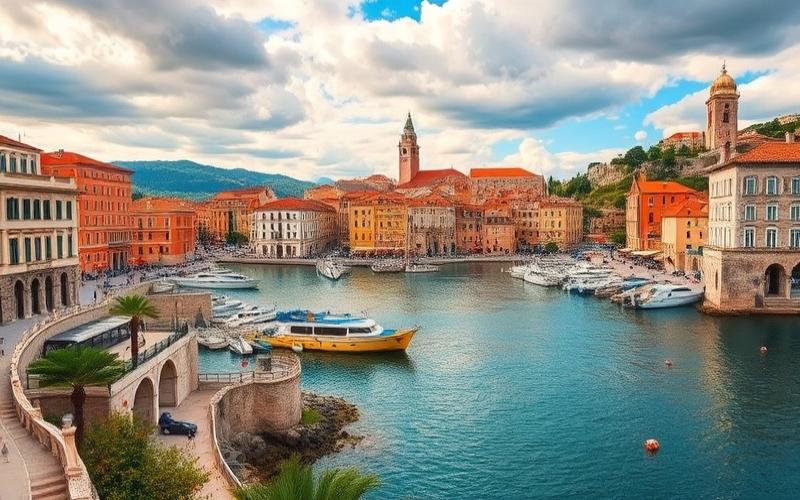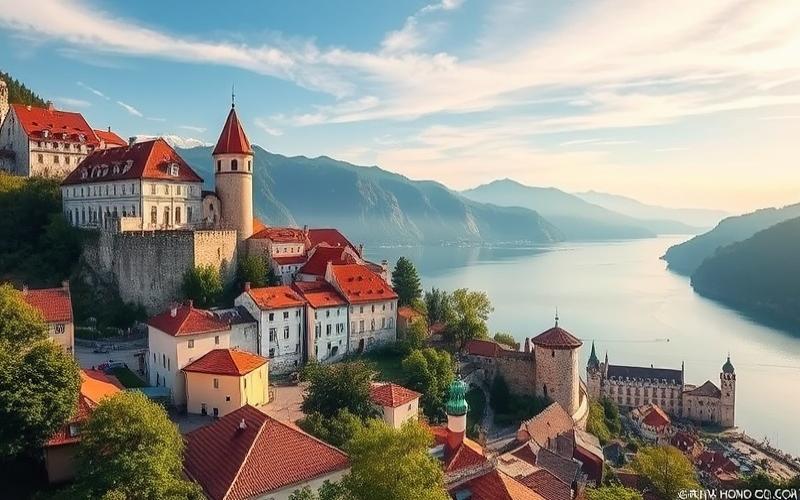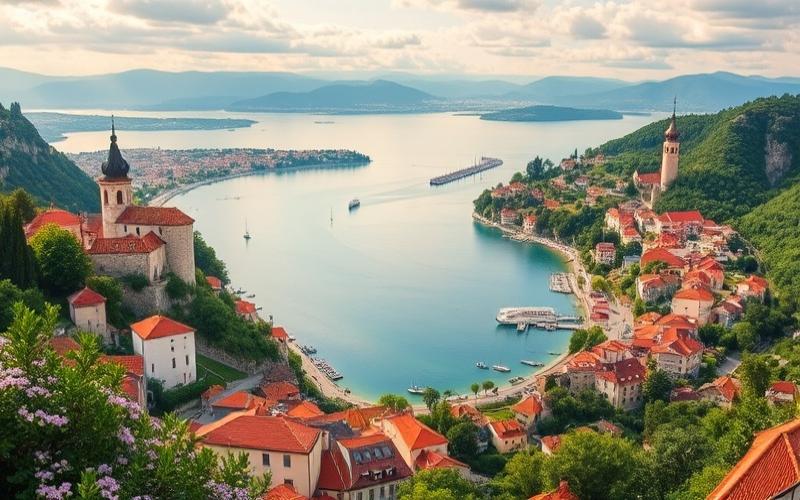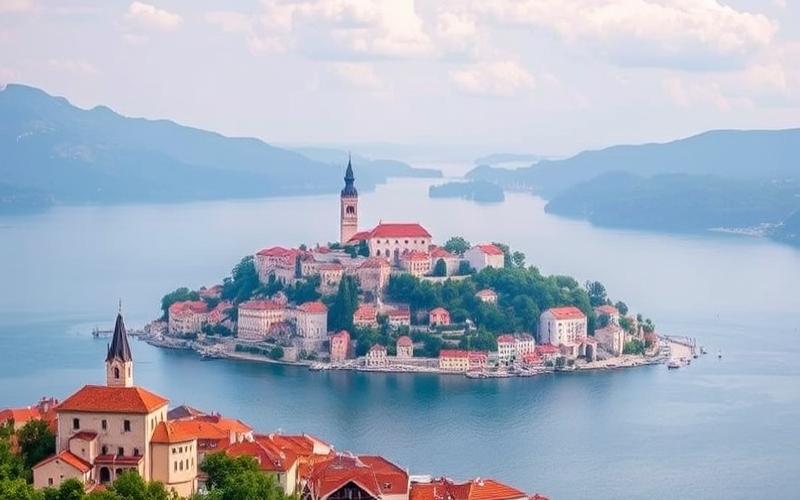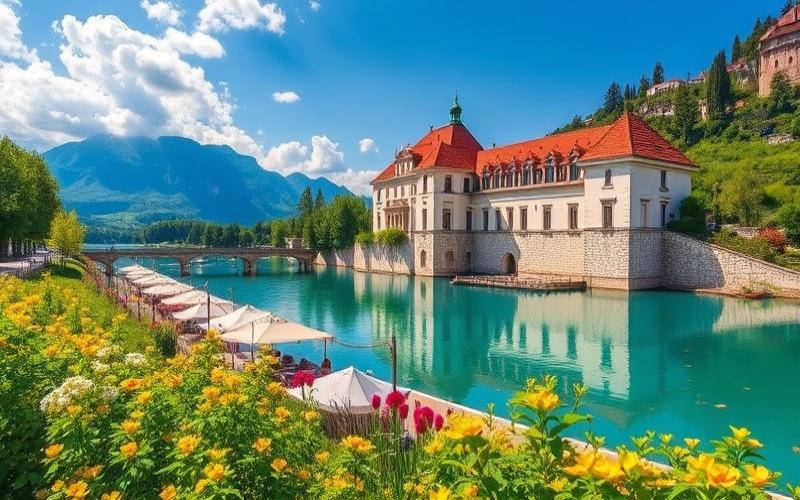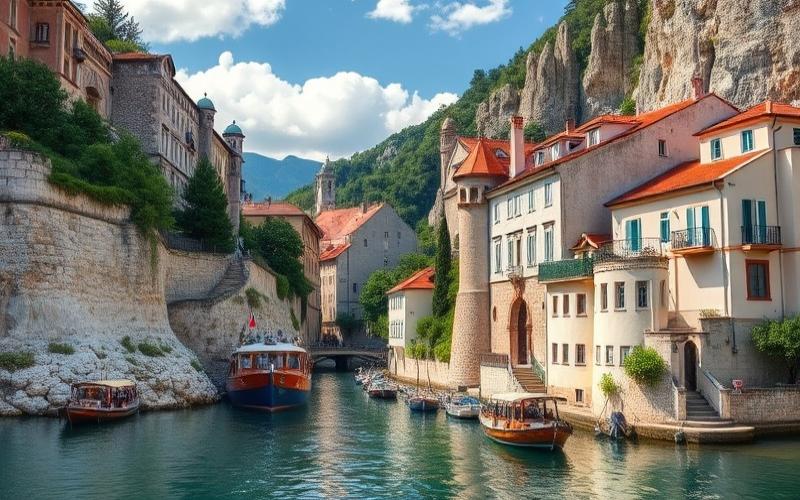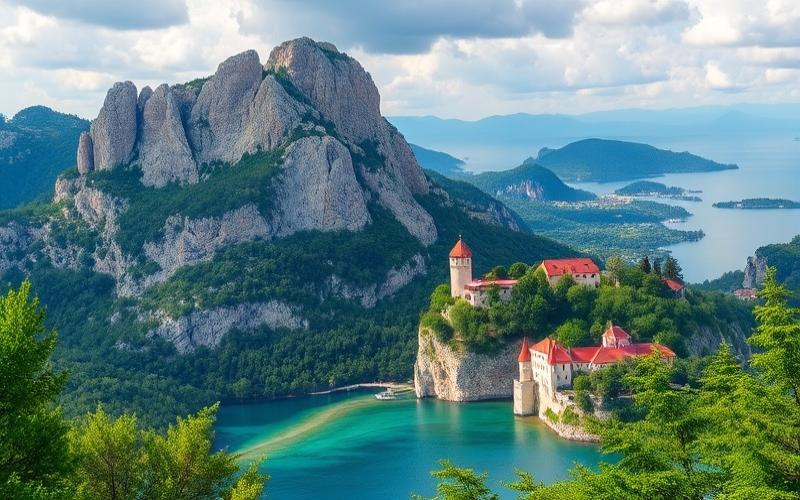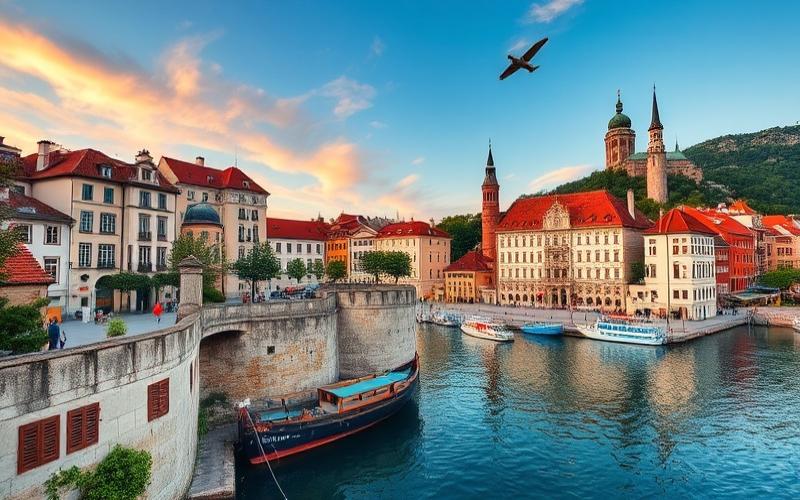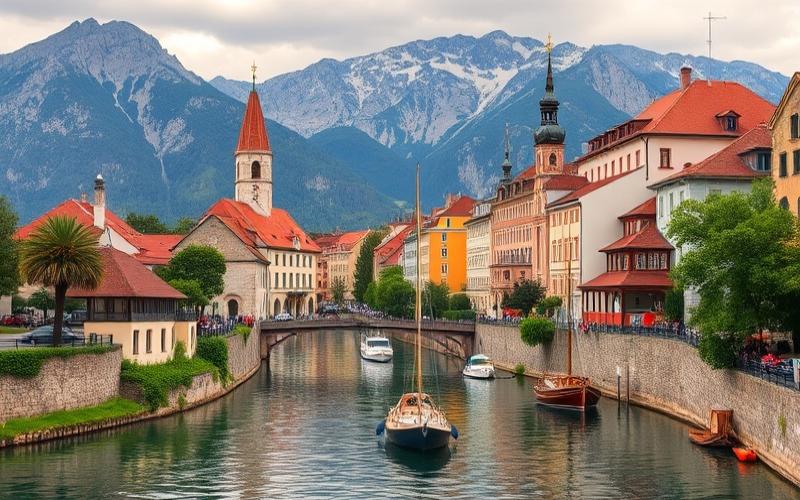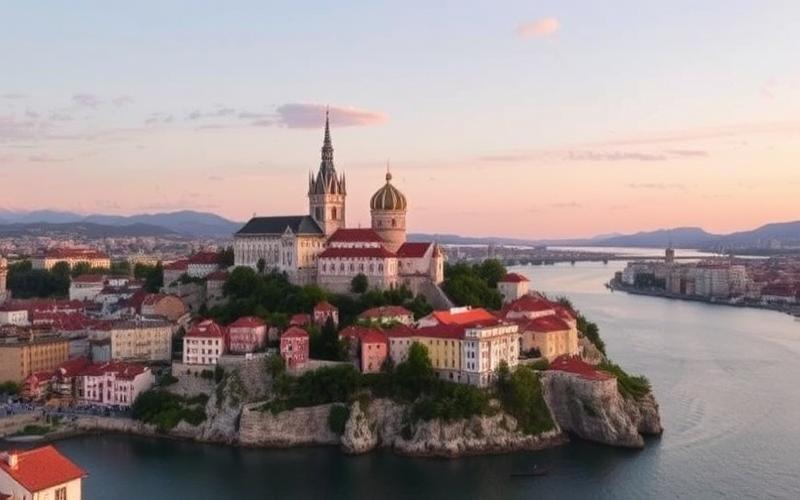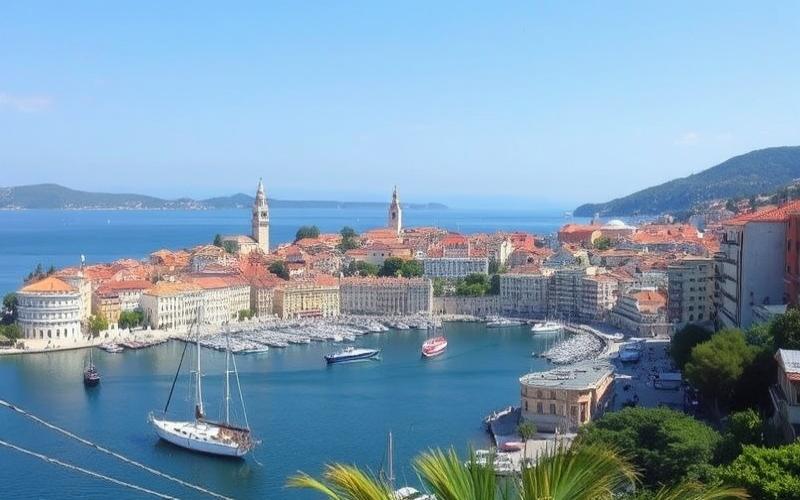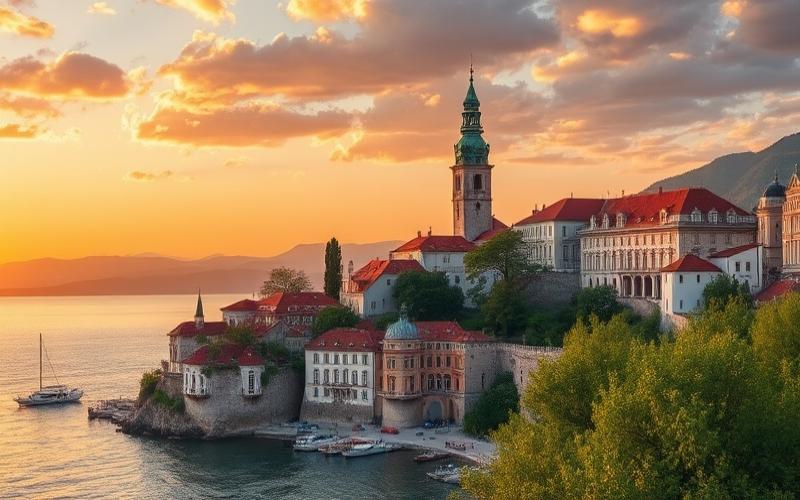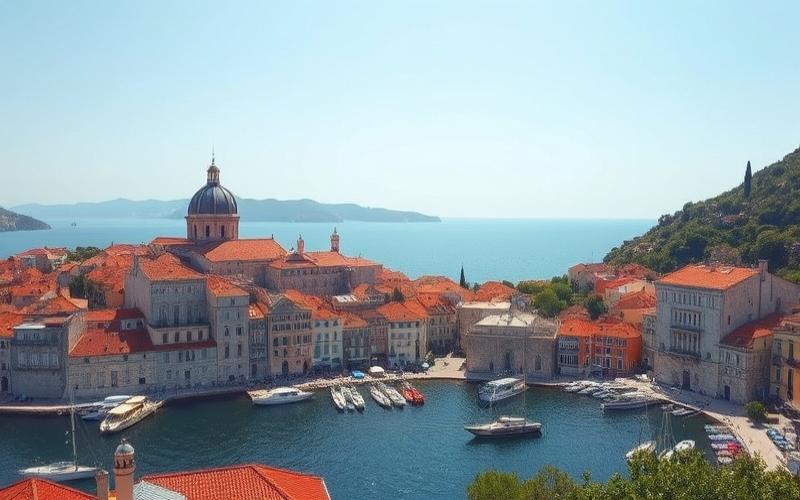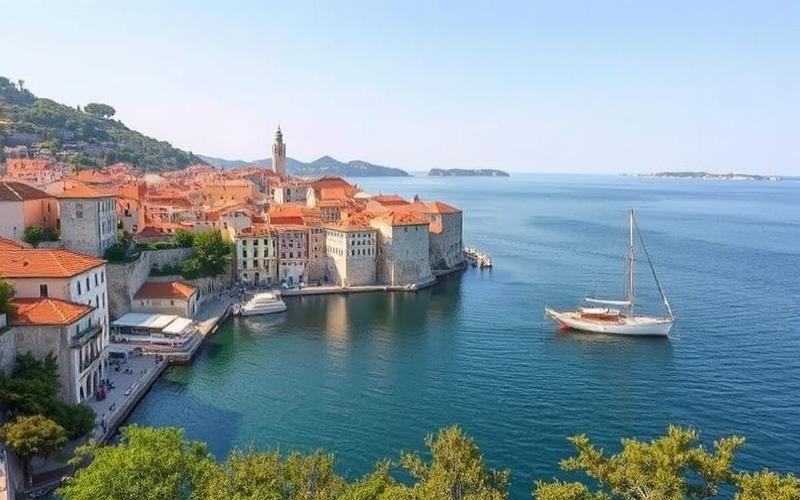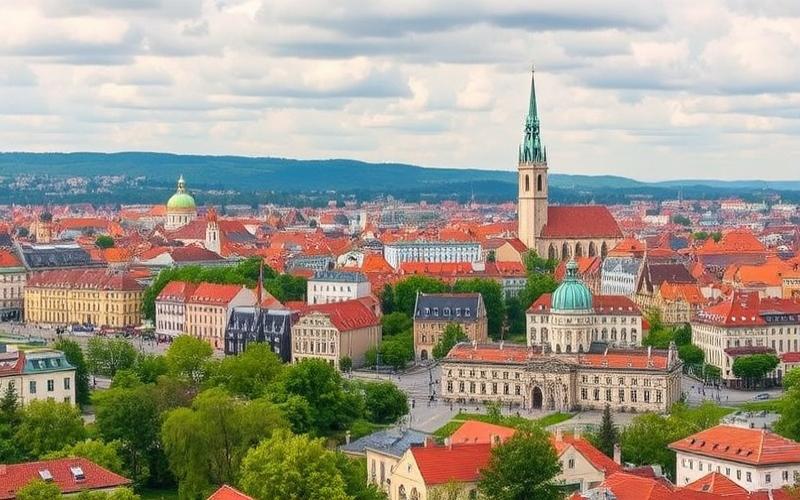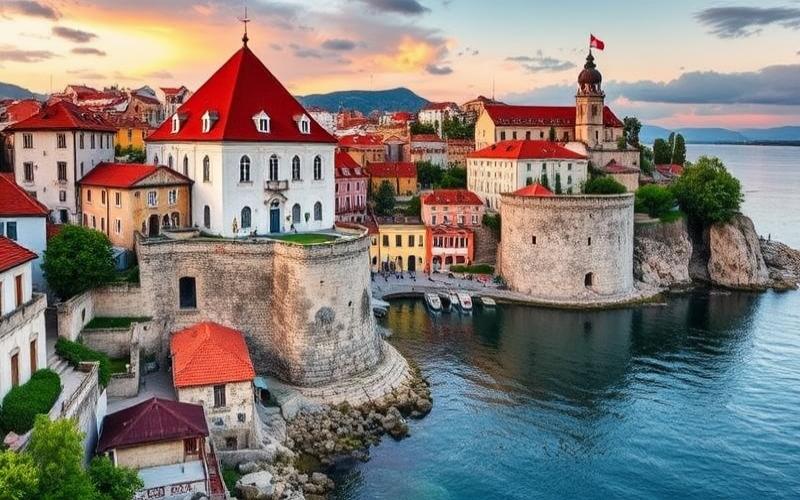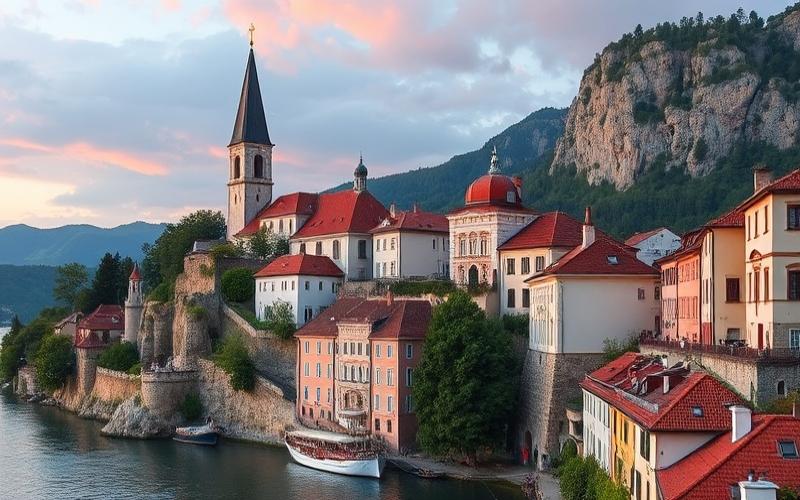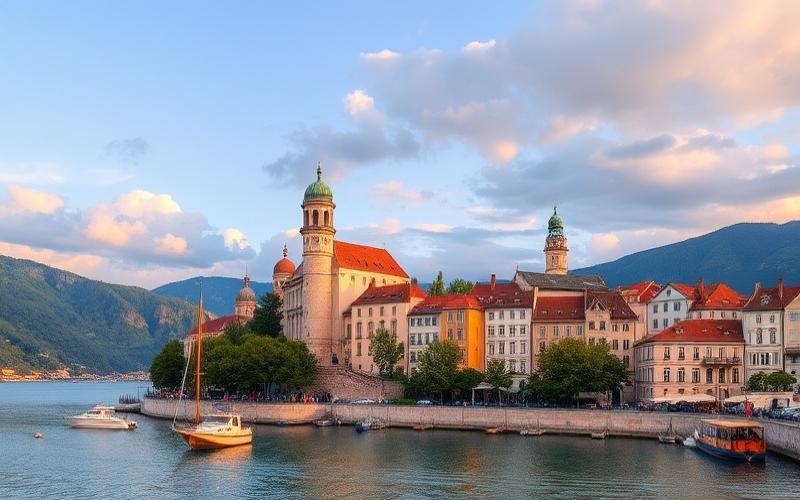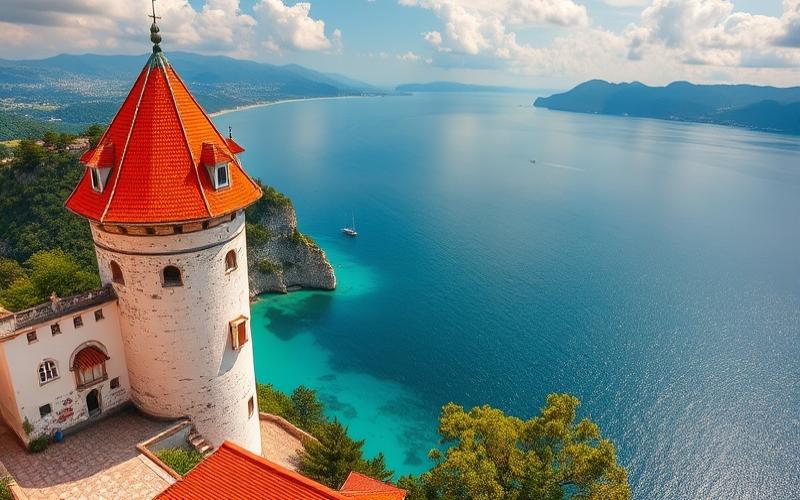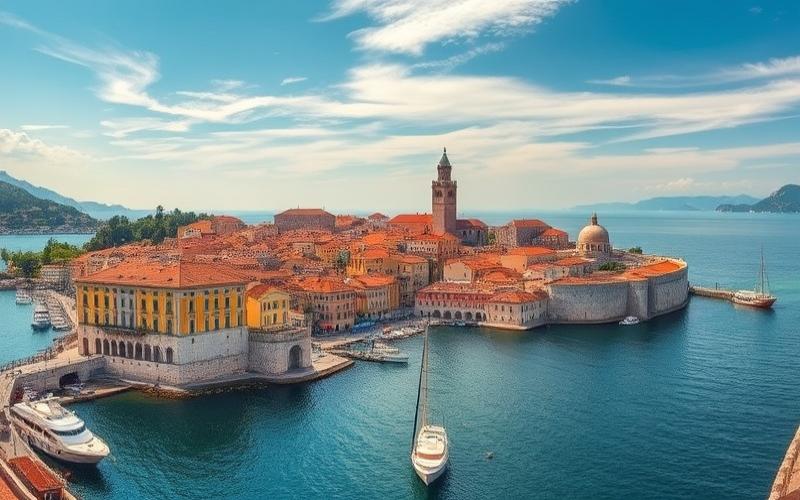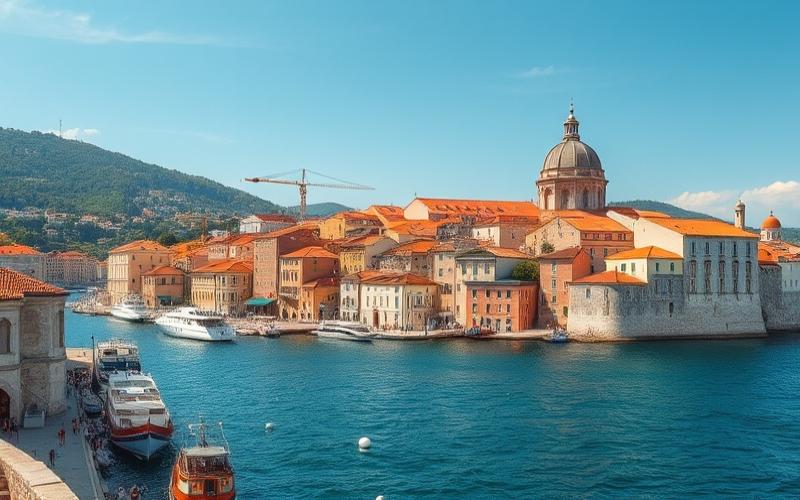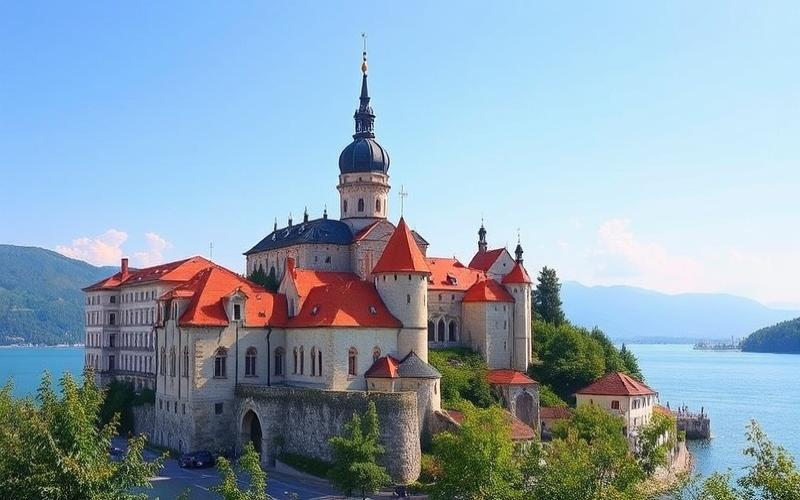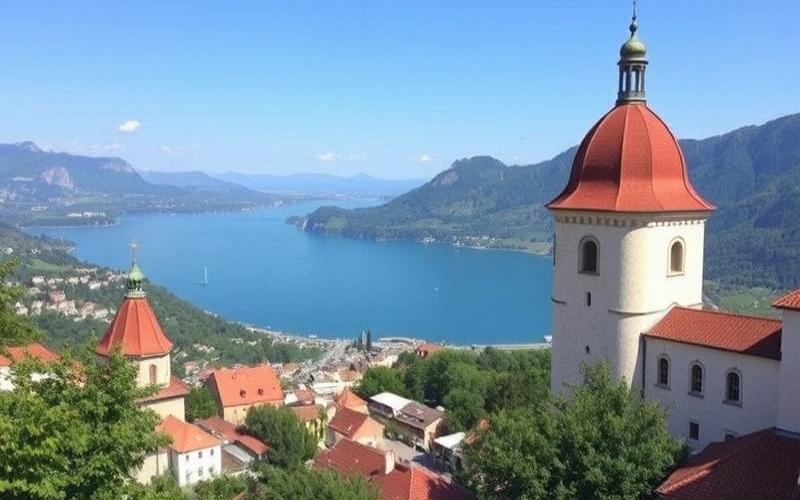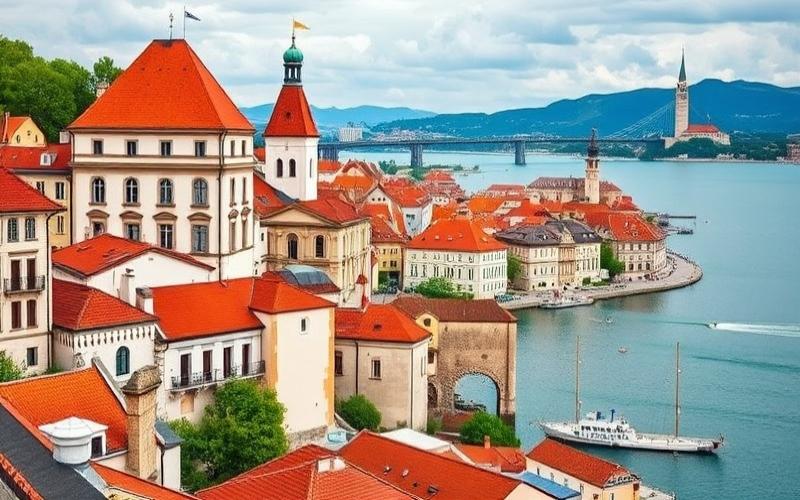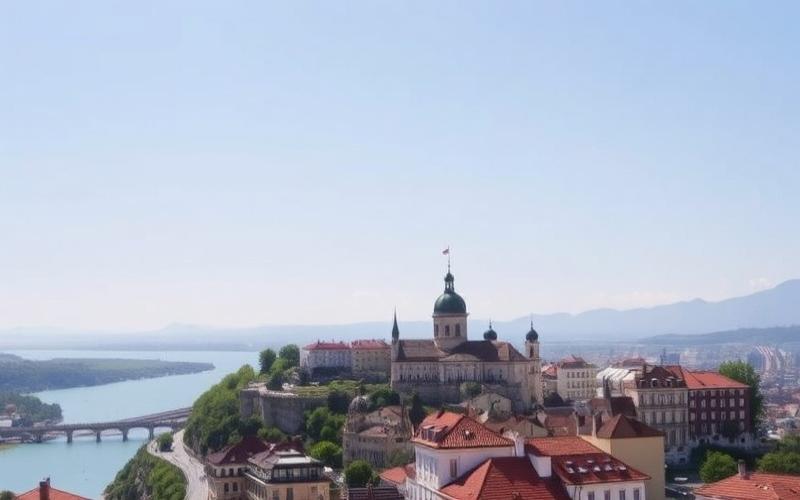
 Published on and written by Cyril Jarnias
Published on and written by Cyril Jarnias
Nestled at the crossroads of Central Europe and the Mediterranean, Croatia stands out as a prime destination for real estate investors seeking new opportunities and attractive diversification.
With its breathtaking landscapes, pristine beaches, and rich cultural heritage, this country not only captivates tourists but increasingly attracts those looking to capitalize on a booming market.
Recent economic reforms and steady tourism growth have transformed Croatia’s real estate sector into fertile ground for potentially lucrative investments.
Far from being just a holiday destination, Croatia offers investors attractive tax incentives and prices that remain competitive compared to other popular European spots.
Why Choose Croatia for Your Real Estate Investments?
Croatia stands out for its solid economic stability and steady growth, supported by robust fundamentals and prudent macroeconomic policies. With GDP growth of +3.8% in 2024, above the eurozone average, and an unemployment rate down to 5.6%, the country confirms its appeal to investors. Public debt is continuously decreasing, inflation is under control (3.0% in 2024), and convergence toward the European Union average is accelerating.
Croatia’s tourism potential is exceptional, with flagship destinations like Dubrovnik and Split attracting millions of international visitors each year. Tourism accounts for 20-25% of the national GDP and ensures a very strong seasonal and year-round rental demand, especially in coastal areas and major cities.
The Croatian real estate market remains affordable compared to other comparable European destinations. This offers investors:
- Still accessible purchase prices.
- Potential for high rental yields thanks to strong seasonal demand.
- Prospects for capital appreciation in the medium and long term, driven by tourism growth and infrastructure development.
Real Estate Price Comparison (2025):
| City | Average Price per m² (€) | Comparison with Major European Cities |
|---|---|---|
| Zagreb | 2,500 | 40-60% lower than Berlin or Paris |
| Split | 3,200 | 30-50% lower than Barcelona or Rome |
| Dubrovnik | 4,000 | 20-40% lower than Nice or Lisbon |
Croatian legislation provides a favorable legal and tax framework for foreign investors, with:
- Advantageous taxation on rental income.
- Guaranteed property rights for non-residents.
- Simplified acquisition procedures, facilitated by the adoption of the euro and integration into the Schengen area.
Croatia has recently modernized its infrastructure (road networks, ports, airports), and international accessibility has improved thanks to new flight connections from many European cities. This modernization boosts tourism demand and facilitates remote property management.
Investor Testimonials:
“Investing in Split was a turning point: the rental yield is over 7%, and demand remains strong even off-season.”
Éric M., French investor
“The simplicity of the process and legal security convinced me to diversify my assets in Dubrovnik. The appreciation prospects are real.”
Anna S., German investor
“The new infrastructure and economic stability provide a reassuring framework for long-term investment.”
Marek T., Polish investor
Key Takeaways:
Croatia combines economic growth, tourism potential, attractive real estate prices, secure legal framework, and increased accessibility—all assets that encourage strategic and sustainable investment.
Good to Know:
Croatia is a prime destination for real estate investment due to its economic stability and steady growth, attracting many investors. Thanks to popular tourist spots like Dubrovnik and Split, the seasonal and permanent rental potential is significant, meeting strong demand. Compared to other European destinations, the Croatian real estate market remains affordable, offering interesting opportunities for profitability and capital gains. The legal and tax framework is favorable to foreign investors, complemented by modernized infrastructure and increased accessibility from various European cities. Many investors have shared positive testimonials, highlighting the success of their strategic choice in Croatia, further enhancing the appeal of this dynamic market.
Overview of Prices and Housing Types in Croatia
Types of Housing Available in Croatia
- Apartments: Very common in urban centers (Zagreb, Split, Dubrovnik) and by the sea. Available for annual or seasonal rent.
- Single-family homes: Found on the outskirts of cities and in the countryside, often sought by families or expatriates.
- Villas: Mainly located on the coast, often with a pool, large garden, and sea view, targeting tourist or high-end clientele.
- Seafront properties: Highly sought after, especially for seasonal rentals or as second homes; direct proximity to the sea significantly increases the price per square meter.
Average Price Comparison by Region (2025)
| Region | Average Price per m² (Purchase) | Rent for 2-Room Apartment/Month |
|---|---|---|
| Istria | 3,517 € | 800 – 1,000 € (coastal) |
| Kvarner (Rijeka) | 3,500 € | 600 – 900 € |
| Split-Dalmatia | 3,490 € | 800 – 1,000 € (seafront) |
| Zadar | 3,390 € | 700 – 950 € |
| Zagreb | 3,071 € | 400 – 600 € (city center) |
- Note: Prices per square meter are rising, with growth of 7 to 12% over the previous year depending on coastal regions.
- Coastal areas (Istria, Dalmatia) show the highest prices, while inland areas and some major cities like Zagreb are slightly more affordable.
Recent Trends in the Croatian Real Estate Market
- Tourism and Price Increases: Foreign demand and seasonal tourism support price rises, especially for apartments and seafront villas. Short-term rentals are very lucrative during the summer season.
- Properties for Renovation: Demand for older properties to renovate is growing, driven by potential capital gains or conversion into tourist rentals.
- New Construction: New developments attract investors, offering better energy performance and stable profitability, especially in dynamic cities and seaside resorts.
Seasonal Influences on Prices and Availability
- In high season (July-August), rental prices increase by 20 to 40% compared to low season.
- Availability of apartments and houses for long-term rent decreases on the coast in summer, as many owners prefer seasonal rentals.
- Purchase prices vary little by season, but transactions are more numerous in spring and autumn.
Forecasts for the Real Estate Market in 2024
- Continued price increases, but at a slower pace, due to reduced accessibility for first-time buyers and planned increases in property taxes for 2025.
- Foreign investments are expected to remain strong, but the introduction of higher taxes could stabilize or slightly lower prices in some areas.
- Investment opportunities remain strong in new builds and renovations, particularly in tourist regions and major cities.
- The housing price index reached 214.18 points in the first quarter of 2025, a new record.
Visual Summary of 2025 Trends
| Factor | Impact on the Market | Opportunities |
|---|---|---|
| Tourism | Price increases on the coast | Seasonal rental, villa purchase |
| Taxation | Planned increase in 2025 | Invest before the rise |
| Renovation | High demand | Capital gains on older properties |
| New Construction | Investor appeal | Profitability, energy standards |
| Season | Volatile rental prices | Optimize summer rentals |
In Croatia, the diversity of real estate offerings and market dynamics provide options suited to every buyer or investor profile, with marked price differences between tourist regions and the interior of the country.
Good to Know:
In Croatia, the real estate market offers a variety of housing, from city apartments to single-family homes and seafront villas, especially in Dalmatia and Istria, where prices are significantly higher than in cities like Zagreb. For example, a seafront apartment can far exceed 3,000 euros per square meter, compared to around 2,000 euros in Zagreb. Tourism intensifies demand on the coast, particularly for properties to renovate, while new constructions constantly emerge to meet this growing interest. Recent trends show price increases linked to tourist popularity, but also some seasonality with higher prices during summer months. Forecasts for 2024 indicate price stabilization, with potential for moderate appreciation, especially thanks to infrastructure investments and sustained international demand.
Attractive Areas and Profitability Potential in Croatia
Dubrovnik, Split, Zagreb, and Istria are among the most attractive regions for real estate investors in Croatia, each distinguished by specific characteristics that enhance their investment potential.
| Region | Key Strengths for Investment | Types of Real Estate in Demand | Price Evolution and Profitability |
| Dubrovnik | – Strong international recognition – Exceptional tourist appeal (UNESCO) – Limited supply in the historic center | – Vacation apartments – Luxury villas – Second homes | – Among the highest prices in the country – Strong seasonal rental demand – High profitability on short-term rentals |
| Split | – Second largest city – Economic and university hub – Major cruise port | – Urban apartments – Office buildings – Vacation homes | – Continuous rise in price per m² – Growing demand, especially for tourist rentals – Stable yield potential |
| Zagreb | – Administrative and economic capital – Modern infrastructure – Development of business districts | – Office buildings – Urban apartments – Classic residential investments | – More moderate prices than the coast – Steady value growth – Good stability of rental income |
| Istria | – Highly touristic region (Pula, Rovinj) – Natural beauty and appeal to foreigners – Favorable for green investment | – Seafront villas – Second homes – Eco-friendly and sustainable properties | – Sustained demand, especially from foreign buyers – Expected long-term appreciation – Growing interest in eco-friendly properties |
Distinctive Characteristics of Each Region:
- Economic Development and Infrastructure:
- Zagreb stands out for its modern infrastructure, universities, and role as a decision-making center.
- Split benefits from port and economic dynamism, also attracting investments in the tertiary sector and offices.
- Dubrovnik and Istria rely on high-level tourism, with sustained demand for second homes and luxury properties.
- Tourist Popularity:
- Dubrovnik attracts over a million visitors per year, creating strong pressure on seasonal rental supply.
- Split and Istria see an influx of tourists and foreign investors, drawn by heritage, the sea, and quality of life.
- Types of Properties in Demand:
- Seafront villas, vacation apartments, and second homes are particularly sought after on the coast and in Istria.
- In Zagreb, office buildings and urban apartments dominate demand.
Price Evolution and Growth Prospects:
- The average price per m² reached about 3,090 € in 2022/2023, an increase of over 30% since 2020 in the most sought-after areas (Dubrovnik, Split, Opatija). The rise is more moderate in Zagreb.
- Experts estimate that price growth should continue, driven by economic stability, an influx of foreign buyers, and the vitality of the tourism sector.
- Rental yields, especially for seasonal seaside rentals, remain among the highest in Central Europe.
Trends and Expert Opinions:
- Investors now prioritize sustainable and smart properties, integrating eco-friendly solutions and green technologies, especially in Istria and on the coast.
- A sector expert notes:
“Demand for eco-friendly and energy-efficient properties is constantly growing, offering investors a competitive advantage and long-term appreciation potential.”
- A foreign investor testifies:
“We chose Istria for market stability, the beauty of the setting, and the possibility of generating attractive rental income while enjoying the property for personal use.”
Key Takeaways:
- Coastal regions and Zagreb offer a combination of capital growth, stability, and rental yield, especially for well-located properties or those with high tourist appeal.
- Integrating sustainability criteria and technological innovation in Croatian real estate enhances property competitiveness and future valuation potential.
Croatian real estate, particularly in these regions, remains one of the most dynamic investment options in Southeast Europe, supported by international demand, still competitive prices, and a booming tourism sector.
Good to Know:
Croatia is increasingly attracting real estate investors thanks to promising areas like Dubrovnik, Split, Zagreb, and Istria. Dubrovnik and Split, popular for their tourist influx, offer lucrative opportunities in vacation apartments, while Zagreb, with its booming economy, sees growing demand for office buildings. Istria stands out for its second homes, with still affordable prices and developing infrastructure. Real estate prices have seen a notable rise in recent years, particularly in Dubrovnik and Split, where tourism growth has been a driver. A recent report shows a 6% price increase in Dubrovnik in 2022. According to experts, these trends will continue, supported by a strong economy and government initiatives favorable to foreign investment. Investors report interesting yields of 5 to 7% annually, emphasizing the importance of carefully analyzing the local market to maximize return on investment.
Foreign Investment: Procedures and Comparisons
Administrative Procedures for a Foreign Investor in Croatia
- Application for a mandatory Croatian tax number (OIB).
- Verification of property title and cadastral status by a lawyer or notary.
- Signing a preliminary sales agreement with a deposit payment (usually 10% of the price).
- Obtaining purchase approval from the Ministry of Justice for non-EU/EEA investors (checking reciprocity agreements and judicial verifications).
- Submission to the Ministry of Foreign Affairs with complete file: signed contract, passport copy, proof of payment, etc.
- Finalization at the notary, then registration at the municipal cadastre and local land registry.
- Payment of applicable taxes.
Generally required documents:
- Valid passport
- Croatian tax number (OIB)
- Signed contract
- Proof of fund origin
- Preliminary agreement or notarized contract
- Ministerial approval for some non-EU countries
Potential administrative timelines:
| Step | Estimated Time |
|---|---|
| Obtain OIB | A few days |
| Ministry of Justice Approval (non-EU) | From a few weeks to several months |
| Cadastral Registration | A few days to weeks |
Applicable taxes:
– Real estate acquisition tax: generally 3% of the price, paid after registration in the land registry.
Comparison with Spain, Portugal, France
| Country | Specific Procedures | Key Documents | Average Timelines | Main Taxes |
|---|---|---|---|---|
| Croatia | Ministry approval if non-EU/EEA; OIB; Mandatory cadastre | Passport, OIB, notarized contract | A few weeks to months | Acquisition: ~3% |
| Spain | NIE mandatory; strict legal verification | Passport/NIE, authentic deed | Generally quick (~1 month) | Acquisition: ~6–11%, various fees |
| Portugal | NIF mandatory; no special approval | Passport/NIF, authentic deed | Quick | Acquisition: ~6–8% |
| France | Notary mandatory; strict urban planning verification | Passport, authentic deed | 1–2 months | Acquisition: ~7–8% (notary fees) |
Foreign investments in Croatian real estate have progressed since EU accession. In 2024:
- Over 20% of coastal real estate transactions involve a foreign buyer
- German, Austrian, and Scandinavian buyers represent a growing share (>35% among non-residents)
- Zagreb and Split show an annual increase >12% in volume invested by internationals
International investor testimonials
“I chose Croatia mainly for the tourism dynamism. The procedure was quite smooth thanks to my European status—I got my tax number quickly and finalized the purchase in less than a month. Legal support is essential.”
— German buyer, second home
“As a Canadian citizen, I waited nearly three months for ministerial approval, but everything was well managed by my local real estate agent.”
— Canadian rental investor
Synthetic list of key points:
- OIB tax number required from the start
- Sometimes long administrative delays for non-EU/EEA
- Relatively low single tax compared to other Mediterranean countries
- Notable advantage if EU/EEA citizen—accelerated procedure without special approval
Good to Know:
To invest in real estate in Croatia, a foreigner must obtain an OIB (tax identification number) and open a local bank account; required documents include a valid passport, proof of purchase, and the signed sales contract. Property registration fees are 5% of the property’s value, while completing formalities can take from a few weeks to several months depending on complexity. Comparatively, Spain and Portugal offer simplified procedures for foreign buyers, with slightly shorter timelines and often tax incentives. In France, the process is more formalized, with generally higher notary fees, but market stability is an asset. In 2022, Croatia recorded a 10% increase in foreign investment flows, illustrating its growing popularity, while investor testimonials highlight price competitiveness and high tourism potential as distinct advantages compared to these other European markets.
Disclaimer: The information provided on this website is for informational purposes only and does not constitute financial, legal, or professional advice. We encourage you to consult qualified experts before making any investment, real estate, or expatriation decisions. Although we strive to maintain up-to-date and accurate information, we do not guarantee the completeness, accuracy, or timeliness of the proposed content. As investment and expatriation involve risks, we disclaim any liability for potential losses or damages arising from the use of this site. Your use of this site confirms your acceptance of these terms and your understanding of the associated risks.

